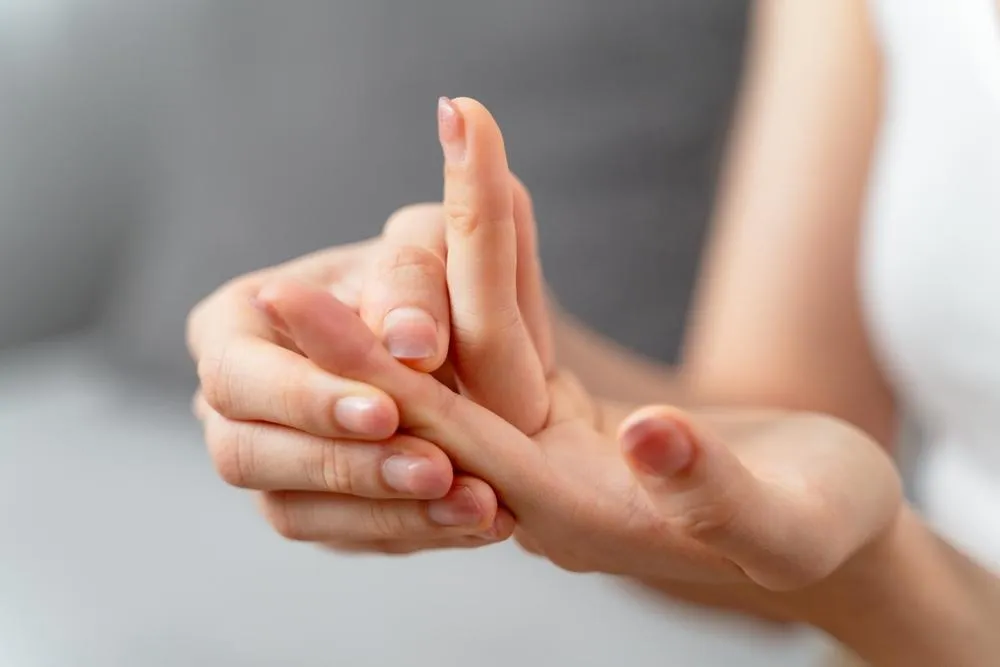
Why You Should Always Protect Your Hands During Training
Every strike, grip, or block depends on the strength and health of your hands. In the world of sports injury recovery, few areas are as critical to protect as the fingers, knuckles, and wrists, especially in combat sports where speed, precision, and impact matter. Whether you’re striking pads in Muay Thai, securing a submission in Brazilian Jiu-Jitsu, or training for MMA, your hands are the direct link between your technique and performance. Yet, they are often the first to sustain damage and the last to receive proper care.
When hand injuries happen, the impact goes beyond temporary pain. Without the right care, a minor sprain can turn into a long-term problem that limits strength, flexibility, and confidence. Protecting your hands is not just about avoiding downtime, but about ensuring long-term performance, preventing chronic issues, and keeping your training consistent.
The Hands: Small but High-Risk Structures
The human hand contains 27 bones, along with a complex network of tendons, ligaments, nerves, and muscles. This intricate design gives it incredible dexterity but also makes it highly vulnerable to injury. Strains, sprains, and fractures can occur from a single awkward movement, while repetitive stress can wear down joints and soft tissue over time.

For combat sports enthusiasts, the risk increases with repetitive gripping, striking, clinching, and blocking. Poor hand positioning, inadequate protection, or overtraining can quickly lead to overuse injuries. Even small aches should be taken seriously, as they can escalate into conditions that require lengthy sports injury recovery.
Hand injuries in combat sports often include:
Knuckle bruising and swelling from repeated striking
Ligament sprains in the fingers and wrist from awkward grips or impacts
Tendon inflammation caused by overuse in grappling or clinching
Fractures from misaligned punches or heavy pressure during submissions
In grappling arts, constant gi or no-gi grips can strain the finger joints, leading to stiffness and reduced mobility. In striking sports, misjudged punches or training with improper form can cause wrist sprains or even break bones. Left untreated, these injuries may lead to chronic pain, limited range of motion, and long-term joint problems like arthritis.
Prevention: The First Step in Sports Injury Recovery
When it comes to sports injury recovery, prevention is always the best defense. Simple habits can significantly reduce the risk of hand injuries:
Always wrap your hands or tape your fingers before training, especially for high-impact or high-grip sessions
Warm up the wrists and fingers with mobility exercises and light resistance work
Use high-quality gloves or protective gear suited to your sport
Focus on proper form during both drills and live sparring to avoid awkward impacts or grips
Adding grip-strength training to your routine can also improve joint stability and resilience. Exercises like plate pinches, wrist curls, and banded finger extensions help strengthen the muscles and ligaments that protect the hands.
Advanced Treatment Options for Sports Injuries
Modern sports injury recovery now offers advanced, non-surgical options that help athletes heal faster. One effective method is shockwave therapy, which uses targeted acoustic waves to stimulate tissue repair, increase blood flow, and reduce inflammation.
For combat sports athletes, shockwave therapy offers several advantages:
Accelerated healing for tendon, ligament, and muscle injuries
Reduced downtime so you can return to training sooner
Non-invasive approach with no need for surgery or long recovery periods
Pain reduction without relying on medication
Because it promotes long-term tissue health, shockwave therapy can also lower the risk of chronic pain developing from untreated injuries.
Recovery Timeline and Expectations
Sports injury recovery for hand injuries varies depending on the severity and type of damage. Minor strains may heal within 1 to 2 weeks, while ligament sprains or small fractures could require 4 to 8 weeks. More severe injuries may take months to fully recover.

During recovery, it’s important to:
Follow professional recommendations for rest and rehabilitation
Avoid returning to full-intensity training until cleared
Perform prescribed mobility and strengthening exercises to maintain function
Use supportive wraps or braces when reintroducing training loads
A gradual return to sport is the safest way to prevent setbacks. Pushing too hard, too soon, can undo weeks of healing.
Practical Steps to Protect Your Hands Long-Term
Here are some long-term strategies to reduce injury risk and support optimal sports injury recovery:
Incorporate regular mobility work for wrists, fingers, and forearms
Use periodization in training to avoid overloading the same movements repeatedly
Cross-train to build balanced strength in supporting muscle groups
Get regular check-ups with a sports chiropractor or therapist to catch small issues before they become major problems
Protecting Your Hands from Injury
Your hands are essential to your performance in combat sports. Neglecting their care risks not only your training but also your long-term joint health. By combining preventive strategies, professional treatment, and advanced recovery methods like shockwave therapy, you can train harder, recover faster, and protect your future in the sport.
At Optimal Health Members, we specialize in helping combat sports athletes recover quickly and safely. Our team offers advanced, non-invasive treatments that accelerate healing, restore mobility, and reduce pain so you can get back to doing what you love with confidence. Book your session today.